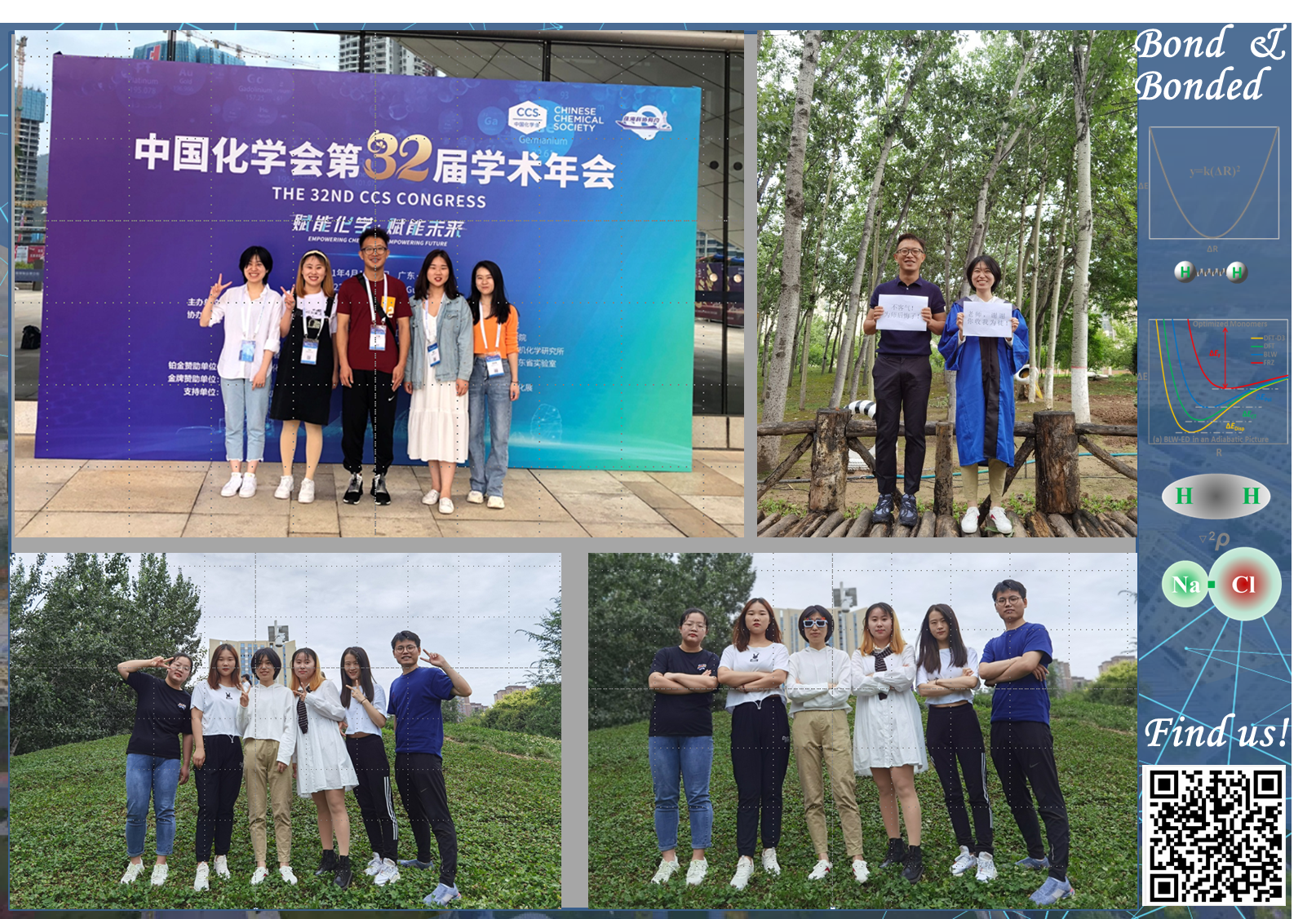研究方向:
本课题组主要从事化学键理论方法发展及应用研究,希望为经典的化学键概念带来新认识、为新成键形式的发现和表征提供可靠的理论支持。
成键分析方法是沟通理论化学计算结果和直观化学概念的桥梁,对化学键理论的发展不可或缺。基于能量、电子密度和轨道相互作用的成键分析方法从不同的角度描绘了化学键的图像,且被广泛应用。本课题组针对非共价键理论研究中的难点,以化学概念清晰的价键理论为基础,从能量、振动分析和电子密度等面发展成键分析方法,并将其应用于非共价键研究之中,以期为化学键理论的发展提供新思路和新见解。
欢迎有兴趣的同学加入我们!一起学习探索!

主持基金:
1.国家自然科学基金面上项目 基于块定域化波函数的绝热表象成键分析方法的发展与应用(2021-2024)
2.国家自然科学基金青年项目 多卤阴离子体系中化学键本质的计算化学研究 (2017-2019)
3.山东省优秀中青年科学家科研奖励基金 石墨烯和石墨烷多聚体的能量分解分析 (2014-2015)
讲授课程:
本 科: 《结构化学》《基础计算化学实验》《分子设计》
研 究 生: 《量子化学》
留学博士生:《理论化学与分子模拟》
教育背景:
2004-2008:中山大学化学与化学工程学院化学专业学士学位
2008-2010: 厦门大学化学与化工学院物理化学专业博士研究生 (导师:吴玮教授)
2010-2012:西密歇根大学联合培养博士研究生 (莫亦荣教授课题组)
2012-2013:厦门大学化学与化工学院物理化学专业博士研究生 (毕业)
2013-2014:希伯来大学化学系 (Sason Shaik教授课题组)
工作经历:
2014-2018 : 中国石油大学(华东)理学院 讲师
2018- : williamhill威廉希尔官网 威廉希尔体育app官网 副研究员
代表论文:
1.Wang, C.; Ying, F.; Wu, W.; Mo, Y., Sensing or No Sensing: Can the Anomeric Effect Be Probed by a Sensing Molecule?Journal of the American Chemical Society2011,133(34), 13731-13736.
2.Wang, C.; Chen, Z.; Wu, W.; Mo, Y., How the Generalized Anomeric Effect Influences the Conformational Preference. Chemistry – A European Journal2013,19(4), 1436-1444.
3.Wang, C.; Danovich, D.; Mo, Y.; Shaik, S., On The Nature of the Halogen Bond.Journal of Chemical Theory and Computation2014,10(9), 3726-3737.
4.Wang, C.; Ying, F.; Wu, W.; Mo, Y., How Solvent Influences the Anomeric Effect: Roles of Hyperconjugative versus Steric Interactions on the Conformational Preference. The Journal of Organic Chemistry2014,79(4), 1571-1581.
5.Wang, C.; Mo, Y.; Wagner, P.; Schreiner, P.; Jemmis, E.; Danovich, D.; Shaik, S., Self-association of graphane is driven by dispersion and enhanced by orbital interactions. Journal of Chemical Theory and Computation2015,11(4), 1621-1630.
6.Wang, C.; Guan, L.; Danovich, D.; Shaik, S.; Mo, Y. On the Origins of the Directionality of Noncovalent Intermolecular Interactions.Journal of Computation Chemistry2016,37(1), 34-45.
7.Wang, C.*; Danovich, D.; Shaik, S.; Mo, Y., Halogen Bonds in Novel Polyhalogen Monoanions. Chemistry – A European Journal2017,23(36), 8719-8728.
8.Wang, C.*; Danovich, D.; Shaik, S.; Mo, Y.,A Unified Theory for the Blue- and Red-Shifting Phenomena in Hydrogen and Halogen Bonds.Journal of Chemical Theory and Computation2017,13(4), 1626-1637.
9.Wang, C.*; Danovich, D.; Shaik, S.; Mo, Y., Hydrogen- and Halogen-Bonds Between Ions of Like Charges: Are They Anti-Electrostatic in Nature?Journal of Computational Chemistry2018,39, 481-487.
10.Wang, C.*; Danovich, D.; Shaik, S.; Wu W.; Mo, Y., Attraction between Electrophilic Caps: A Counterintuitive Case of Noncovalent InteractionsJournal of Computational Chemistry2018
11.Wang, C.;Aman, Y.; Ji, X.; Mo, Y., Tetrel bonding interaction: an analysis with the block-localized wavefunction (BLW) approach.Physical Chemistry Chemical Physics2019,21(22), 11776-11784.
12.Wang, C.;Mo, Y., Classical Electrostatic Interaction Is the Origin for Blue-Shifting Halogen Bonds.Inorganic Chemistry2019,58(13), 8577-8586.
13. Du J.,Wang C., Yin S., Wang W., Mo Y.,Resonance-assisted/impaired anion–π interaction: towards the design of novel anion receptors,RSC Advances.2020,10, 36181-36191.

